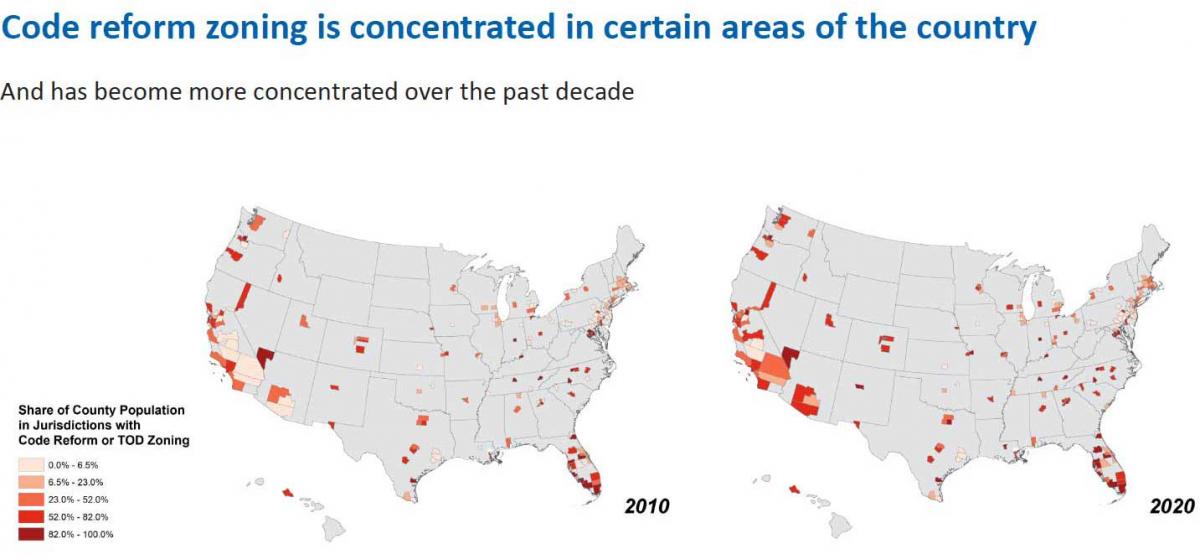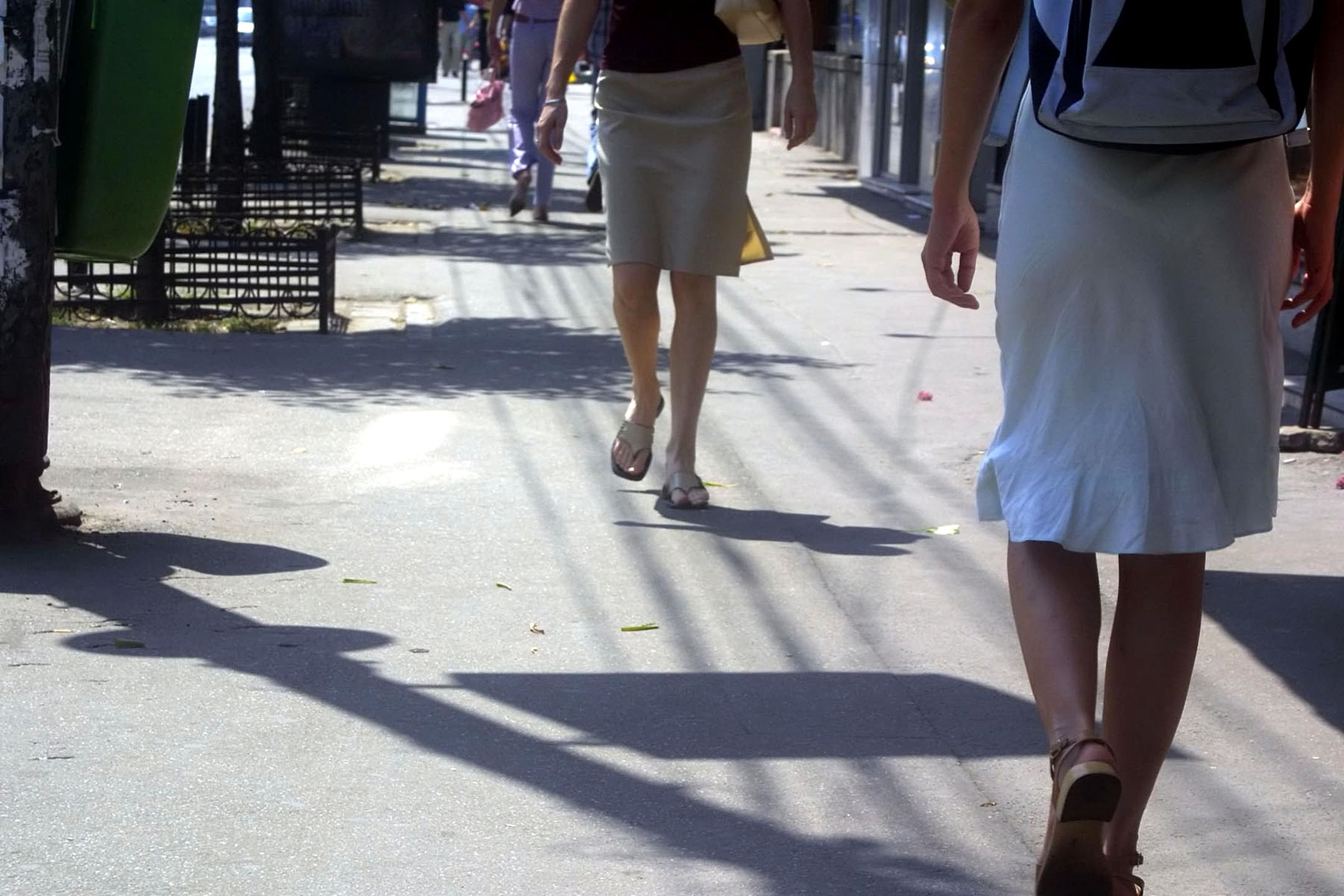Editor's note: this article originally appeared on Public Square: A CNU Journal and is republished with permission.
New-urbanist-type zoning codes rose 53 percent across the US over the previous decade, according to research by the CDC-funded Physical Activity Policy Research and Evaluation Network (PAPREN). Across the board, this type of zoning promotes more sidewalks, mixed-use, bicycle-pedestrian trails, bicycle-pedestrian connectivity, street connectivity, crosswalks, bicycle lanes, and bicycle parking.
In other words, more zoning codes are calling for infrastructure that facilitates walking, bicycling, and non-automotive travel in daily life, PAPREN finds. The codes reflect the intentions of cities, but will need public and private investment to realize these goals.
If so, zoning reform could have a profound impact, over time, on the degree to which Americans’ day-to-day activities promote health, as analyzed by the organization’s Applied Evaluation project. The graph below shows how code reform is addressing these issues, compared to conventional codes.

The study looked at about 2,300 municipalities in 200 of the most populous counties in the US, accounting for 55 percent of the US population. While research focused on the larger metro regions, the counties include small towns and rural areas, notes Jamie Chriqui, a professor at the University of Illinois at Chicago, and co-director of PAPREN.
Some highlights from the study:
- New urbanist type codes have been adopted by 26 percent of jurisdictions in 2020, up from 17 percent in 2010, of the areas studied. These codes include form-based, traditional neighborhood development, and Transect-based codes, the SmartCode, transit-oriented development zoning, and similar regulation. These categories of codes all promote New Urbanism and mixed-use, walkable places, and there is some overlap between them.
- Size of municipality is the greatest predictor of where these codes were adopted, with larger cities correlated with code reform. Given that finding, it is likely that prevalence of new urban codes in areas not studied, more sparsely populated and containing 45 percent of the US population, are lower.
- Code reform is most prevalent in the South and West. Pockets of the Northeast and Midwest are getting zoning reform. The prevalence in the South would not be surprising to those who know the history of the New Urbanism and the early codes that were adopted in Florida and the Gulf Coast. Parts of the US with relatively low population, such as the northern Great Plains states, were not included in the study.

PAPREN’s is the first longitudinal study to compare growth of new urbanist codes, relative to conventional zoning, in a way that is fairly comprehensive nationwide. The project is also the first to correlate these codes to infrastructure objectives. Previous research by a different group, the Codes Study, has tracked the rising total number of form-based codes, which tracks with PAPREN’s findings. A 2021 study last year explored the question of whether form-based codes tend to lead to gentrification, and concluded that they do not. The author of that analysis, Emily Talen, also notes, through a literature search, the positive impacts from FBCs on physical and environmental well-being. That aligns with PAPREN on the growth of codes that call for infrastructure in support of physical activity and less automobile use.
Zoning code reforms emerged in the US as a policy strategy to reduce sprawl and reliance on cars, and increase physical activity, says Chriqui.
This will not be a surprise to new urbanists, but the reforms seek to:
- Create compact development
- Create pedestrian-friendly or traditional neighborhoods
- Increase street connectivity
- Create mixed use and higher density neighborhoods
- Increase open space and alternative transportation
Although progress has been made in code reform, there is still a long way to go in many regions. Nearly a third (32 percent) of large municipalities have adopted new urban code reform; but two thirds have not. For middle and small municipalities, the contrast is greater. More than 80 percent of mid-size municipalities have not taken this step, and nearly 90 percent of small municipalities have yet to reform their codes to support physical activity, the research shows.
For public health officials, zoning may not be on their radar. PAPREN’s research shows that it should be, because code reform has an impact on infrastructure policy that supports pedestrians and bicyclists.






